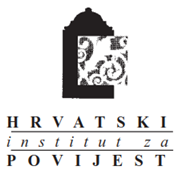THE ROLE OF THE MEDIA IN SHAPING AND PROPAGATING MAY DAY RITUALS: AN EXAMPLE OF GLAS SLAVONIJE, NEWSPAPER FROM OSIJEK (1945-1950)
DOI:
https://doi.org/10.22586/review.v17i1.19693Keywords:
Yugoslavia, Slavonia, Osijek, socialism, May Day, Glas Slavonije, CPY, “socialist competition”, shock workAbstract
The Communist Party of Yugoslavia’s (CPY) rise to power in 1945 was followed by a period of fundamental socio-political changes that encompassed all aspects of life. In order to establish a complete political and ideological authority, the government attempted to suppress all elements which, in their view, were not aligned with the doctrine of the Communist Party. As a result, everything that was perceived as remnants of the old socio-political order was marginalised, such as religion, tradition and customs. Moreover, reinterpretation of the past also took place, as well as creation of new rituals and Tito’s cult of personality. Accordingly, a completely new calendar of official, state holidays was established, deprived of any national or religious tradition. One of those holidays was May Day, which was celebrated for two days and whose purpose, like most other holidays of that period, was to create uniqueness of feelings and actions in society, focusing on the working class, socialism, CPY, Yugoslavia and Josip Broz Tito. Besides, celebrations of major anniversaries and holidays, including May Day, presented an opportunity for transmission of ideological and political messages, most often articulated through numerous slogans which clearly defined the direction in which the society should move. The media played a key role in this process. Therefore, the central part of the paper consists of the analysis of newspaper articles from Glas Slavonije in order to understand its role in the implementation of those new political rituals and social values.
Downloads
Published
How to Cite
Issue
Section
License
Copyright (c) 2021 Copyright holders are the publisher Croatian Institute of History and the authors.

This work is licensed under a Creative Commons Attribution-NonCommercial 4.0 International License.
The copyright holders are the Croatian Institute of History (as the publisher) and the authors.
The Review of Croatian History is an open-access journal. Its contents are freely accessible in their entirety. Users may read, download, copy, distribute, print, search, or put links to its material, and to change, reword, and process the material or use it in other legal ways, as long as they cite the original in the appropriate manner, in accordance with the Creative Commons licence CC BY-NC.
Works published in the Review of Croatian History may be deposited in institutional or thematic repositories, as long as the appropriate links to the web pages of the Journal and Hrčak (central portal of Croatian scientific journals) are made available.
The self-archiving policy is indexed in the Sherpa/RoMEO database, where it is visible that the journal allows the depositing of unreviewed (pre-print), reviewed (post-print), or publisher’s versions of the work.


